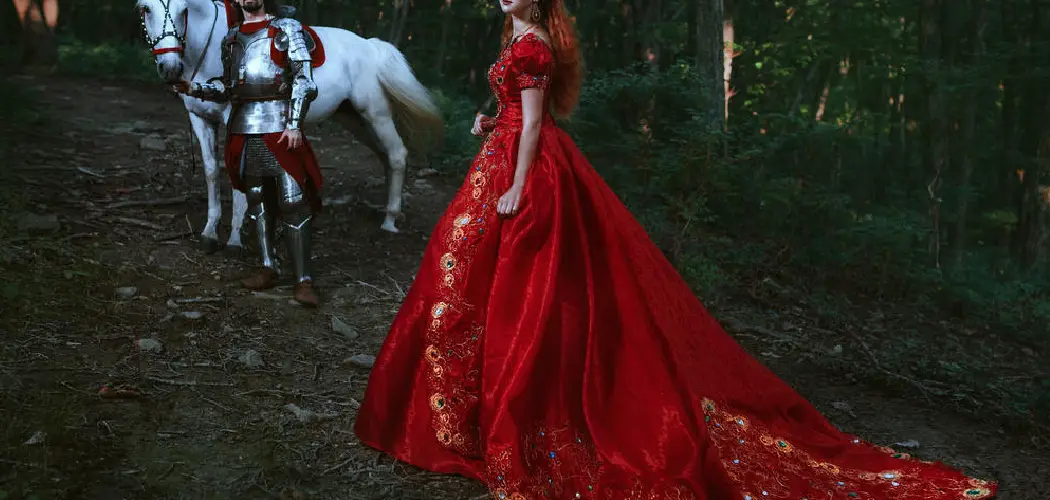Making a medieval dress can be a fun and rewarding experience. Not only will you have a unique garment to wear, but you’ll also gain valuable sewing skills along the way. A medieval dress is perfect for Renaissance fairs, cosplay events, or even as an elegant costume for Halloween. Plus, there’s just something special about wearing a piece of history on your body.
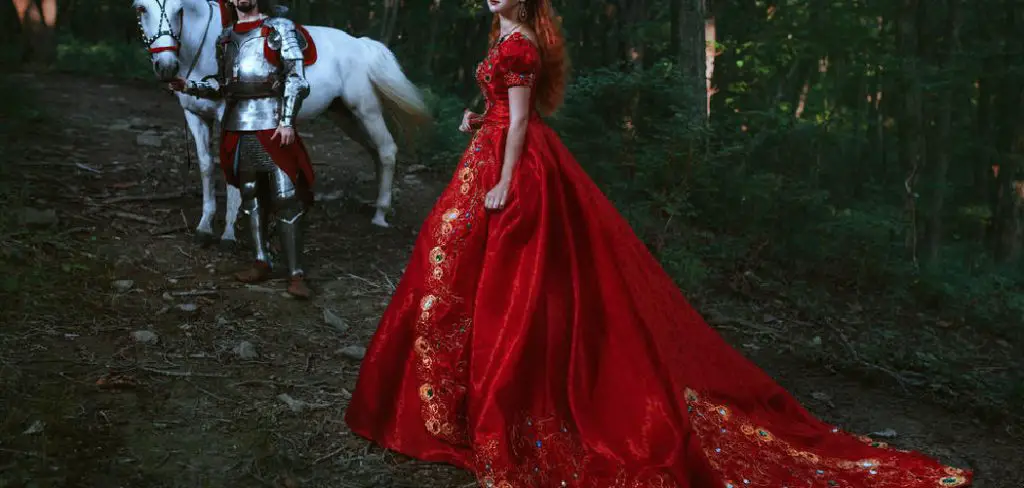
The main advantage of making a medieval dress is the satisfaction and sense of accomplishment that comes with creating something unique and historically accurate. It allows you to express your creativity, while also learning about the fashion and customs of a specific time period. In this blog post, You will learn in detail how to make a medieval dress.
Step-by-step Instructions for How to Make a Medieval Dress
Step 1: Inspect the Materials
Before starting to make a medieval dress, it is important to inspect all the materials you will need. This includes fabric, thread, needles, scissors and any other accessories such as buttons or zippers.
There are many patterns available for making medieval dresses. Choose one that suits your style and level of expertise. Some patterns may require more advanced sewing skills, while others are suitable for beginners.
Step 2: Pre-wash the Fabric
Since medieval dresses were made from natural fabrics such as linen, wool or cotton, it is important to pre-wash your fabric before starting to sew. This will prevent any shrinkage or colour bleeding later on. Using the chosen pattern, carefully cut out all the required pieces from your fabric. Make sure to follow the grain of the fabric and label each piece accordingly for easy assembly.
Step 3: Pin and Sew the Bodice
Start by pinning together the front and back bodice pieces, right sides facing each other. Sew along the designated seam allowance using a straight stitch. Repeat this for the other bodice pieces. If your medieval dress has sleeves, attach them to the bodice by pinning them in place and sewing along the armhole. Make sure to secure any loose threads.
Step 4: Sew the Skirt
Pin and sew together the front and back skirt pieces, right sides facing each other. Leave a gap at the back of the skirt for a zipper or lace-up closure. Hem the bottom edge of the skirt by folding it over twice and sewing.
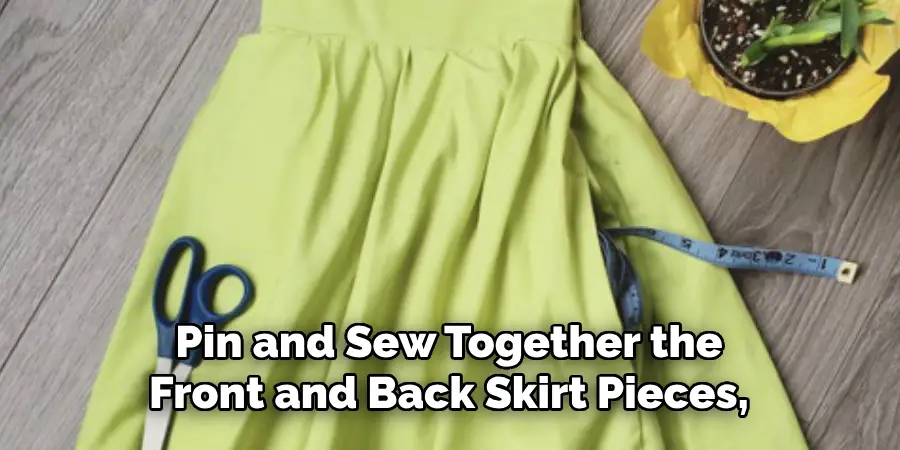
Pin and sew the bodice to the top edge of the skirt, right sides facing each other. Make sure to match any darts or seams for a smooth and even fit.
Step 5: Add Details and Adornments
Medieval dresses often featured elaborate details such as embroidery, beadwork, or lace. This is the time to add any decorative elements you desire to your dress. If your dress has sleeves, hem them by folding over the raw edge twice and sewing. You can also add any desired trim or embellishments at this stage.
Step 6: Insert Closures
If your dress has a zipper or lace-up closure, insert it at the back of the bodice and skirt before sewing them together. Make sure to hide any raw edges for a neat finish. Give your medieval dress one final inspection and make any necessary adjustments. Press out any wrinkles or creases with an iron and try it on for a perfect fit.
By following these steps, you will have successfully created your own medieval dress and can now proudly wear it to any Renaissance fair or themed event. You can also use these instructions as a starting point and add your own unique touches to create a one-of-a-kind dress that reflects your personal style.
Tips for How to Make a Medieval Dress
- Always use caution when handling sharp objects such as scissors and needles.
- It is recommended to have a first aid kit on hand in case of any accidents.
- Make sure to properly measure yourself or the person you are making the dress for before cutting any fabric.
- When using a sewing machine, be sure to read the manual and follow all safety instructions.
- Be mindful of loose clothing or hair when working with machinery or tools.
- Take breaks as needed to avoid fatigue and maintain focus while sewing.
- Use caution when ironing fabrics to prevent burns.

By keeping these tips in mind, you can ensure a safe and successful sewing experience while making your medieval dress. Remember to have fun and let your creativity shine through as you bring your own unique vision to life.
What Are Some Common Mistakes to Avoid When Making a Medieval Dress?
1. Not Doing Enough Research
Before starting your dressmaking, it’s important to do thorough research about the time period you are trying to recreate. Look at paintings, illustrations and other historical sources for inspiration and accuracy.
2. Using Modern Materials
While it may be tempting to use modern materials such as zippers or synthetic fabrics, try to stick with materials that were used during the medieval era. This will give your dress a more authentic look and feel.
3. Incorrect Fit
Medieval dresses were often loose-fitting and draped, so it’s important to avoid creating a tight or form-fitting garment. Take measurements accurately and leave enough room for movement and comfort.
4. Not Paying Attention to Small Details
Details such as embroidery, trimmings and closures were an important part of medieval dresses. Make sure to pay attention to these small details to truly recreate the look of a medieval dress.
5. Using Incorrect Construction Techniques
Medieval dressmaking involved different construction techniques than modern sewing methods. Take the time to research and learn about these techniques, such as hand-sewing and using period-appropriate stitches.

6. Not Considering Undergarments
Undergarments such as chemises, corsets and farthingales were commonly worn under medieval dresses to achieve the desired silhouette. Make sure to take these into account when creating your dress.
7. Rushing the Process
Making a medieval dress takes time and patience. Rushing through the process may lead to mistakes and an unsatisfactory end result. Take your time and enjoy the process of creating a historically accurate dress.
8. Not Making a Mock-up
It’s always a good idea to make a mock-up or toile of your dress before cutting into expensive fabric. This will allow you to make any necessary adjustments and ensure that the final product fits properly.
9. Ignoring Regional Variations
The medieval period spanned several centuries and various regions, each with their own unique styles and fashion trends. Make sure to research and consider regional variations when creating your dress.
10. Sacrificing Comfort for Authenticity
While it’s important to strive for historical accuracy, it’s also important to prioritize comfort when making a medieval dress. Avoid using materials or construction techniques that may be uncomfortable or restrictive for the wearer. Ultimately, creating a medieval dress is a fun and rewarding experience that allows you to step back in time and immerse yourself in a different era.

By avoiding these common mistakes and paying attention to historical details, you can create a truly authentic and beautiful medieval dress. So take your time, do your research, and enjoy the process of creating your own piece of medieval fashion.
What is the Estimated Time and Cost to Make a Medieval Dress?
As with any project, the time and cost to make a medieval dress can vary depending on several factors. These factors include the complexity of the design, availability of materials, your sewing skills, and whether you will be making it from scratch or using pre-made patterns.
In general, it takes an experienced seamstress between 20-25 hours to create a simple medieval dress. This includes time for measuring, cutting, and sewing the pieces together. However, if you are a beginner or the design is more complex, it may take longer.
The cost of making a medieval dress can also vary greatly. If you already have all the necessary materials on hand, such as fabric and thread, then the cost will be relatively low. However, if you need to purchase all the materials, it can add up quickly.
The type and quality of fabric used will also greatly affect the cost. If you are using pre-made patterns, they can range from $15-$30 depending on the complexity and brand. However, if you choose to make your own pattern from scratch, it may take more time but will save you money.
What Are Some Tips for Maintaining and Caring for a Handmade Medieval Dress?
Maintaining and caring for a handmade medieval dress is essential to ensure its longevity and preservation. Here are some tips to keep your dress in top condition:
1. Proper Storage
When not wearing the dress, it’s crucial to store it correctly to avoid any damage caused by dust, insects, or sunlight. Use acid-free tissue paper or cotton sheets to wrap the dress and store it in a dark, dry place. Avoid storing it in plastic bags as they can trap moisture and cause mildew.
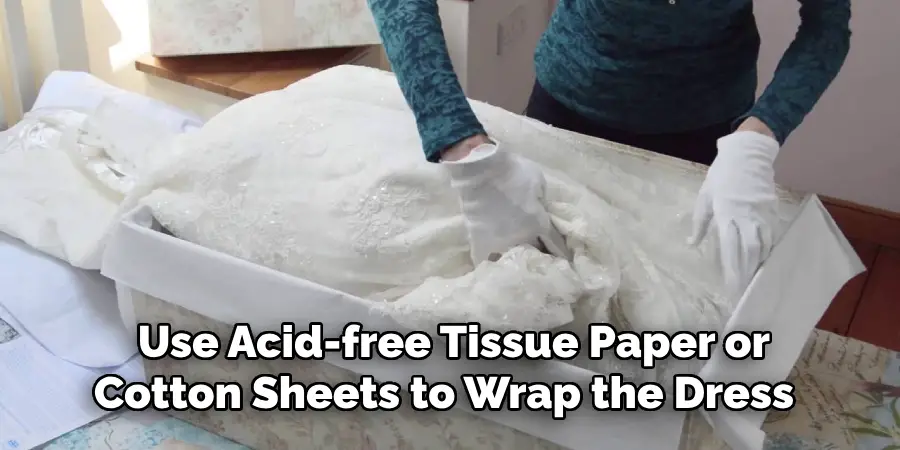
2. Gentle Hand Washing
Handmade medieval dresses are delicate and require gentle care when washing. Fill a bathtub or sink with cold water and add a mild detergent. Gently swish the dress around in the water and let it soak for 15-20 minutes. Rinse thoroughly with cold water and lay it flat on a towel to dry.
3. Spot Cleaning
If your dress has any stains, spot cleaning is the best method to avoid damaging the fabric. Mix a small amount of detergent with water and gently dab the stain with a clean cloth or sponge. Avoid rubbing as it can cause the stain to spread or damage the fabric.
4. Ironing
Ironing is not recommended for medieval dresses as it can damage the delicate fabric and intricate details. If necessary, use a low heat setting and place a towel over the dress to protect it from direct heat.
5. Professional Cleaning
It’s best to avoid dry cleaning your handmade medieval dress as the chemicals used can be harsh on the fabric. However, if necessary, choose a reputable dry cleaner who has experience with delicate fabrics and can provide handwashing services.
By following these tips, you can ensure that your handmade medieval dress remains in excellent condition for many years to come. Don’t forget to also rotate the dress when storing it to avoid any creases or wrinkles. With proper care and maintenance, your dress will continue to be a treasured piece of your wardrobe.
Are There Any Common Challenges or Difficulties That You Should Be Aware of When Making a Medieval Dress?
When creating a medieval dress, there are several key challenges and difficulties that may arise. These include:
1. Finding Accurate Fabric
While modern fabrics can be a convenient alternative, it may be difficult to find ones that accurately match the fabric used during medieval times. This may affect the overall look and authenticity of your dress.
2. Adjusting for Modern Body Shapes
Medieval fashion was designed to fit different body shapes and sizes compared to modern clothing. This means that you may need to make adjustments in your pattern or design to accommodate for a more fitted look.
3. Sewing Techniques
Sewing techniques used during medieval times may differ from modern techniques, making it challenging for some individuals to create an accurate dress without prior experience or research.
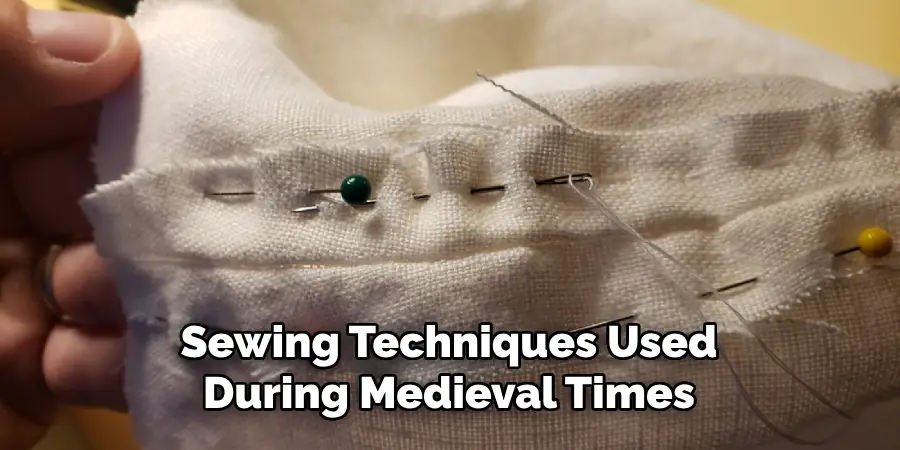
4. Historical Accuracy
Depending on the level of historical accuracy you are aiming for, there may be additional challenges in terms of finding accurate patterns, trims, and accessories that match the time period and region your dress is based on.
5. Cost and Time Commitment
Creating a medieval dress can be a costly endeavor, especially if using authentic materials and techniques. It also requires a significant amount of time and dedication to complete the dress, especially if aiming for high levels of accuracy.
Overall, it is important to carefully consider these challenges and difficulties before embarking on creating a medieval dress. It may require additional research, skills, and resources, but the end result can be a beautiful and authentic representation of historical fashion.
So while using modern fabrics may be convenient, it is important to keep in mind that they may not always provide the most accurate or authentic look.
Conclusion
In conclusion, making a medieval dress may seem like a daunting task, but with careful planning and attention to detail, it can be a rewarding experience. Whether you are creating a costume for a historical reenactment or simply want to add some medieval flair to your wardrobe, following these steps will ensure that you end up with a beautiful and authentic-looking garment.
Firstly, choose your fabric wisely. Historically, natural fibers such as linen, wool, and silk were used to make medieval clothing. These fabrics not only add to the authenticity of your dress but also provide comfort and breathability while wearing it. I hope this article has been beneficial for learning how to make a medieval dress. Make Sure the precautionary measures are followed chronologically.

